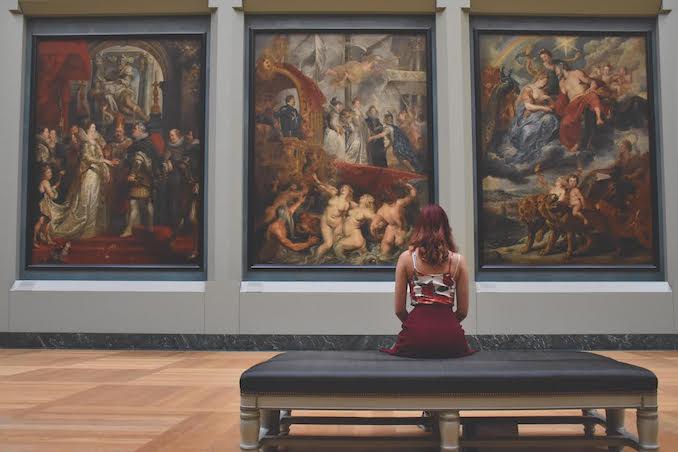Art beautifies human life. Students usually write about collage, drawing, painting, photography, and sculptures. Colleges ask students to provide analysis to let them understand the peculiarities of the art and analyze their creations. How should students write an art analysis essay? There are five basic rules.
Rule #1. An Art Analysis Speaks about Relationships
Experts study masterpieces to find out how great masters managed to convey the meaning of the work through visual elements and design principles. A student has to find the relation between visual aids and their interaction in the process of the creation of design principles. Visual aids include colors, tones, shades, shapes, lines, special details, texture, and surface. Creators use them to vary things, emphasize them, underline dominance, provide harmony and unity, to contrast, show rhythms, balance, proportion, scales, symmetry, and movement.
Nita Leland said: “Use design as a framework to bring order out of chaos.”
Rule #2. There Is No Single True Variant
Different experts can differently interpret one work. It means that a student can find something new and provide a personal vision of the discussed masterpiece. Nevertheless, students should present their view in three steps:
- Inform about the content
- Discuss the context
- Define the meaning
A student must investigate reliable sources to fill in the information gaps and present a solid art analysis.
Rule #3. Answer Questions
There are basic questions for art analysis but students must select those that relate to their type of art.
First Block of Questions about the Content
What is the genre of the artwork? Is there any allusion? Are there people? What message do they convey? What details help to tell the message? Does the artwork tell a story? What is the tone and mood of the work?What/Where/Why the author has depicted the object this or that way?
Second Block of Questions about the Form & Composition
What can I say about orientation, shape, and size? What can I tell about the boundaries of the work? What do I know about the format? How the author arranged details and objects? Is everything depicted vertically, horizontally, or diagonally? What types of linear mark-making has the author shown? What lines dominate? What is the organization of shapes? Is there repetition?
Third Block of Questions about Value, Tone, and Light
What sources of light do I see? Is the tonal range wide or narrow? What are the true colors and color schemes? Are they opaque or transparent? What is the intensity?
Fourth Block of Questions about Texture and Space?
What is interesting about texture and surface? How is the space of the picture related to the real space? Is the pictorial space deep or shallow?
Fifth Block of Questions about Media
What other experts say about the artwork? Do I agree or disagree with the existing viewpoints?
Rule #4. Consider 5 Dos and Don’ts
There are things a student should and should not do.
5 Taboo Things
?? Don’t say just “I like” or “I do not like” the masterpiece
?? The description is not enough for an art analysis essay
?? Do not omit important details
?? Even a detailed description is not an analysis
?? Analysis without visual support is incomplete
5 to Do Things
?? Explain, provide evidence and justify your considerations, likes and dislikes
?? Describe, analyze and show your critical thinking
?? Describe and analyze each detail
?? Speak to the point
?? Support each description and idea with visual aids
Rule #5. Structure the Paper
An average art essay writing service like CustomWritings states that the right structure guarantees 30% of the total mark. Consequently, an art analysis consists of the basic components. A paper has an introduction, a body, and a conclusion.
The introduction informs about the author, the artwork, subject, date, provenance, location, and technique of the artwork. These are basic details that introduce the masterpiece. According to the opinion of essayhoney.com specialists you should craft a strong opening sentence. It is crucial for engaging the reader from the beginning.
The body should describe the work in a couple of words. The first paragraph should answer 4 questions. How does it look? In what way is it depicted? What is the subject? What elements dominate? The second paragraph speaks about the form of the masterpiece. These are elements of art and principles of design. This paragraph can be also divided into two paragraphs.
Students speak about their opinion and support it with facts, shreds of evidence, and citations in the conclusion.
After-Writing Tips
When the paper is ready, it is important to proofread it and check everything. Different online tools can help to identify grammar mistakes, sentences that are hard to read, and plagiarized extracts. After that, a student should read it the second time to make sure that the structure is logical. Finally, a person must format the paper regarding college demands. Students are usually asked to format essays in APA, MLA, Harvard, and Chicago styles.

